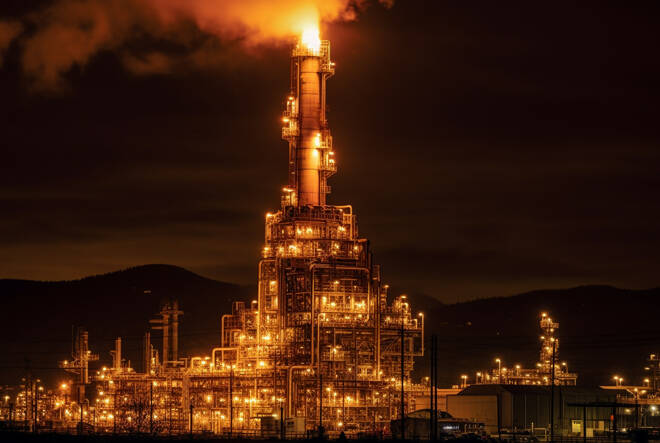Advertisement
Advertisement
Natural Gas Prices Forecast: Will the Clearly Defined Downtrend Change with the Onset of Winter?
By:
Mild weather and the highest storage level since 2020 dampen U.S. natural gas demand and pricing, hinting at ongoing market volatility.
Highlights
- Mild weather and high storage drive natural gas prices down.
- U.S. LNG production delays impact 2024 demand forecasts.
- Bearish market sentiment persists despite robust LNG exports.
Weekly Natural Gas Market Analysis
U.S. natural gas prices retreated last week, with futures closing lower despite robust liquefied natural gas (LNG) exports. The mild weather forecasts, indicating lower heating demand through late December, contributed to this trend, somewhat mitigating the selling pressure. However, the market still recorded a significant 8.28% drop for the week.
Supply and Demand
Current conditions suggest a moderated impact on gas storage withdrawals in the coming weeks, attributed to the blend of mild weather and near-record output. Storage levels are notably higher than typical for this time of year, with the Energy Information Administration (EIA) reporting working gas in storage at 3,719 Bcf as of December 1, 2023, a net decrease of 117 Bcf from the previous week but still above the five-year average.
Economic Indicators and Market Sentiment
The delay in LNG production from Exxon Mobil’s Golden Pass export plant has prompted analysts to revise U.S. demand forecasts downward for 2024. The January delivery futures on the New York Mercantile Exchange indicate an oversold market, with the Relative Strength Index (RSI) lingering below 30. The market’s bearish sentiment is reinforced by record production levels and substantial storage, suggesting that the peak prices for this winter might have been reached in November.
Geopolitical Factors and Global Decisions
With the U.S. set to enter the winter heating season, the country boasts its highest natural gas storage levels since 2020. The milder 2022-2023 winter and weaker heating demand have contributed to this surplus, putting downward pressure on U.S. benchmark natural gas prices. This high inventory level is a key factor shaping market trends as we move into the colder months.
Strategic Moves and Policy Decisions
The U.S. pipeline exports to Mexico have seen a decrease, averaging 3.9 bcfd so far in December. However, this is expected to rise once New Fortress Energy’s plant in Altamira starts operations, further impacting the LNG export landscape. Additionally, gas flows to major U.S. LNG export plants have increased, averaging 14.5 bcfd in December.
Short-Term Forecast
Looking ahead, weather forecasts suggest mild conditions through December 23, with anticipated rises in U.S. gas demand over the next two weeks. However, the future of natural gas prices seems to hinge on whether late December brings colder trends. With the current weather patterns and high storage levels, the market appears to be leaning towards a continued bearish outlook for the near term.
In summary, while LNG exports provide some support, the overall market sentiment remains bearish due to the combination of high storage levels, robust production, and mild weather forecasts. The market’s response to evolving weather patterns and geopolitical developments will be crucial in shaping the natural gas landscape in the coming weeks.
About the Author
James Hyerczykauthor
James Hyerczyk is a U.S. based seasoned technical analyst and educator with over 40 years of experience in market analysis and trading, specializing in chart patterns and price movement. He is the author of two books on technical analysis and has a background in both futures and stock markets.
Advertisement
